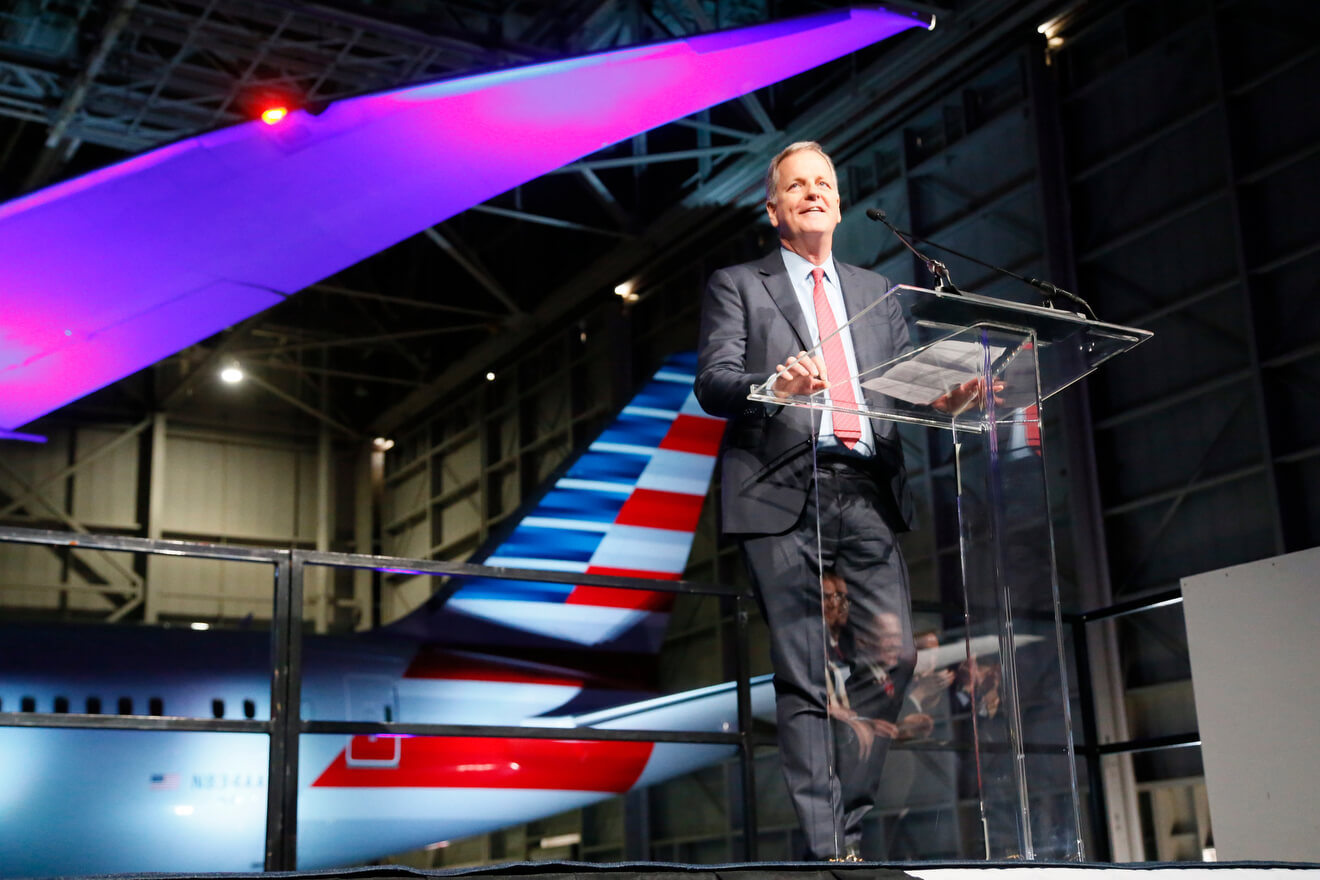US airlines that take up direct payments under the nation’s coronavirus relief bill will need to keep flying to the destinations they currently serve.
Details of the $US50 billion airlines will receive under the $US2 trillion CARES Act were revealed in a video to staff from American chief executive Doug Parker.
The Act has passed through the Senate and could go through the House as early as Friday US time.
READ: Alaska sees substantial flight cuts for several months.
Parker also revealed that American’s flights are less than 15 percent full, despite the fact it is flying just under half of its normal schedule.
He said American would be eligible to receive about $US12 billion from the package.
“We are confident those funds along with our relatively high available cash position will allow us to ride through even the worse of potential future scenarios,’’ he said.
Parker said $25 billion was in the form of loans for airlines and another “more interesting” $25 billion was available as direct payments.
The direct payments were conditional on the airlines agreeing to retain some service to every airport in the US that has commercial air service today as well as to not involuntarily furlough any staff.
“Both of those commitments would be in place to September 30 at which time we all hope and expect this health crisis will be behind us and Americans will be flying again,’’ he said, describing the act as “exceptional bipartisan legislation’.
“Essentially, the US government is providing funds to motivate airlines to continue air service and not involuntarily furlough any team members through a period of incredibly low demand for air travel.
“There are no similar provisions in the bill for other large industries.”
The American CEO said airlines were singled out because of their importance to the US in general and after CEOS warned that flying would be seriously reduced and furloughs implemented without the assistance.
“We further let them know that, unlike most other businesses, once we materially downsized, it would take months to take start up again,” he said.
“This was because our team members would require significant training time and aircraft would need to be gradually brought back into service.”
However, there was a caveat: Parker said the $US25 billion in direct payments required airlines to meet conditions that weren’t currently well defined.
He said he was not yet positive that American would meet those conditions and receive the funds that would allow it to meet the no furlough obligation.
“But based on my personal conversations with the administration I’m highly confident they want us to be flying so I expect their terms will not be onerous.,” he said.
























